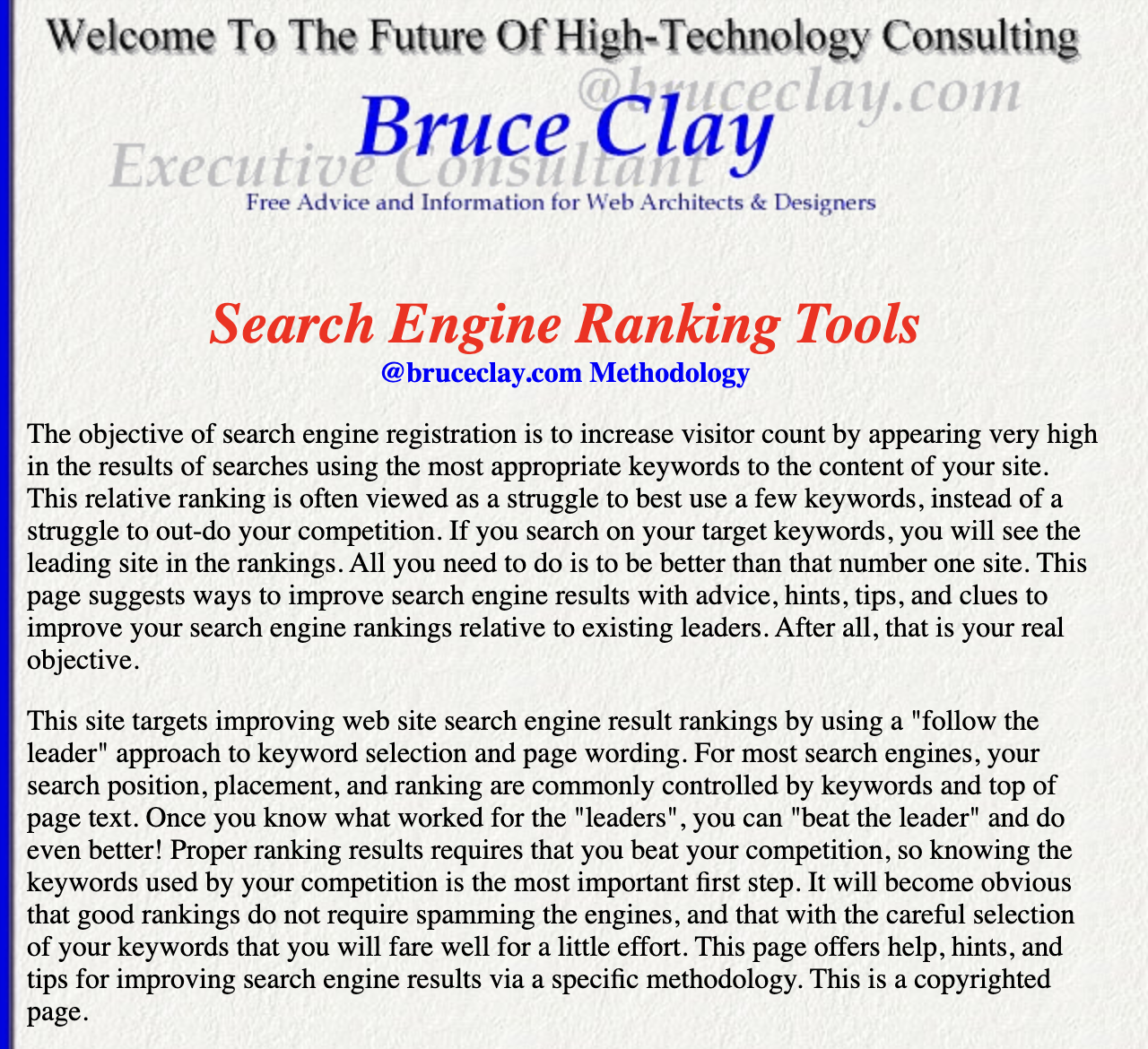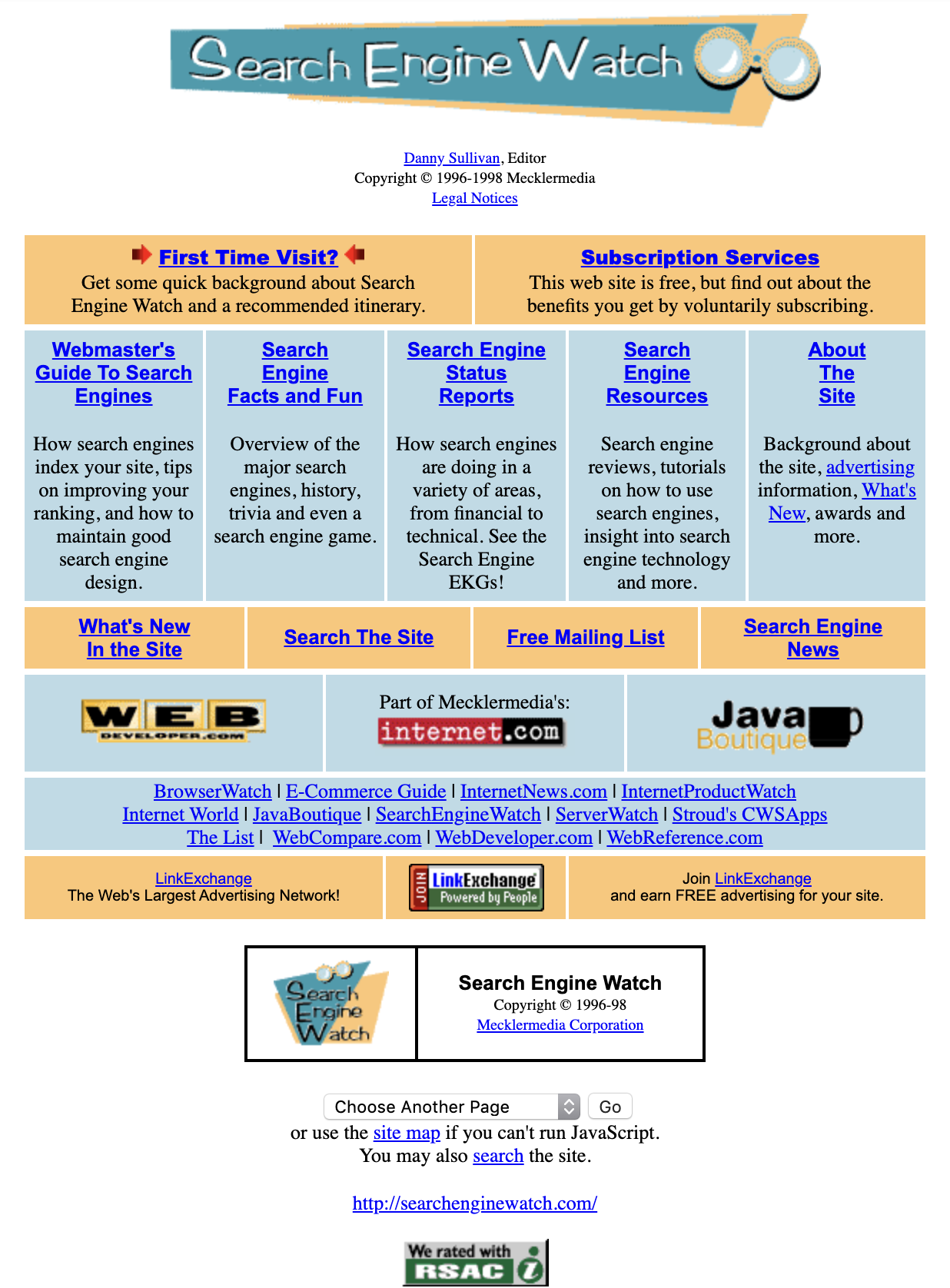A version of this post originally appeared on Tedium, a twice-weekly newsletter that hunts for the end of the long tail.
Wanna get under my skin? Ask me to add a link to an old article of mine.
Maybe it’s a point of pride, or a desire to keep my more than 500 articles on my newsletter in a relatively pristine nature, but I frequently get requests on my articles for backlinks—probably a dozen times a week, someone will reach out asking to add this link or that link to a specific article.
(This past week, someone tried adding me on LinkedIn to convince me to link to their company.)
Often, it’s dressed up like a favor, or a gift. Sometimes they’ll offer me money. But every time, without fail, I decline, as the content generally doesn’t add anything to the article and instead costs me time. It’s the digital equivalent of a salesperson coming up to your door and not taking no for an answer.
And, in many ways, it highlights the failings of search engine optimization as a concept. It can be too easily gamed—and those backlinks are a big reason why.
“Any links intended to manipulate PageRank or a site’s ranking in Google search results may be considered part of a link scheme and a violation of Google’s Webmaster Guidelines. This includes any behavior that manipulates links to your site or outgoing links from your site.”
—A passage from Google’s quality guidelines pointing out what Google does not allow on its platform. Despite this, the link economy exists fairly unabated throughout the internet, with entire companies pushing for links on different websites with the specific goal of pushing up their search presence on Google. I know this because many of them email me.
The rise of backlink culture reflects a digital economy full of back-scratching symbiotic relationships
If you don’t work in online marketing or digital media, you may not even realize this is happening, this sharing of URL-based currency around the web, akin to the way you give data to access a service online.
The way we share data online is often symbiotic—you give up something a company wants, and in exchange, they give you access to some new filter on your phone.
In its own way, the search engine economy works kind of like this, in that the benefits of the link are often distributed as a byproduct to the main offering. A great example of this is the infographic, which was once a highly detailed craft associated with newspapers and magazines like USA Today and Time.
However, as the internet matured and social media entered the picture, the infographic became internet currency. About a decade ago, infographics became extremely popular online, and a huge reason for this was that it was something that was quickly shareable. If you land on a site like Tumblr or Pinterest, you can find literally tons of infographics floating around everywhere.
The people who make these are not doing so just for their health. Often, people are strongly encouraged to include a backlink with that graphic, which has the side effect of potentially driving traffic to your site. But the real benefit goes to the person who actually made the infographic, as they get backlinks on every site that shared the infographic. It’s a somewhat seedy approach in the wrong hands, though it’s widely considered a “white hat” search engine optimization technique.
A similar version of this approach is the Creative Commons model, which often encourages users to share a link in exchange for a free photo or piece of content. Some large companies, most notably LinkedIn, have taken advantage of this tactic to help boost their link presence. Sure, the photos are good, but the reason they exist is because of the domain authority they build.
In a way, due to the way that Google built its PageRank system more than two decades ago, it often matters more who links you than it does how many pageviews you get. So search engine marketers are motivated to get people to share their links in lots of places.

Why did this kind of link-trading become a thing?
All of these tactics are older than you think, and originated out of a general desire to be at the top of the results in a given search engine.
Google may not have come online until late 1998, but there were already internet marketers that were dipping their toes into this space, some of them doing marketing work on directories like Yahoo as early as 1995. There is a site put together by the SEO industry literally called The History of SEO that highlights the evolution of the space over the years.

Some caught the trend early. Bruce Clay, an early internet marketer whose namesake company is still at it today, was dishing out advice on improving web rankings at the beginning of 1996. Here’s what his site said of SEO (also known as “search engine ranking” or “search engine registration”) as of early 1998:
The objective of search engine registration is to increase visitor count by appearing very high in the results of searches using the most appropriate keywords to the content of your site. This relative ranking is often viewed as a struggle to best use a few keywords, instead of a struggle to out-do your competition. If you search on your target keywords, you will see the leading site in the rankings. All you need to do is to be better than that number one site. This page suggests ways to improve search engine results with advice, hints, tips, and clues to improve your search engine rankings relative to existing leaders. After all, that is your real objective.
Another extremely early figure in the world of search engines is someone who is still very active and public facing in that world today, a guy named Danny Sullivan. Sullivan wrote a guide titled The Webmaster’s Guide to Search Engines in 1995. (The guide is no longer online, but Sullivan has some historic materials from the era on his site.)

Sullivan became something of the first search-engine journalist: He started Search Engine Watch in 1996, not long after Clay started his site, and quickly sold it to MecklerMedia; Sullivan later launched Search Engine Land, a similar site, before retiring in 2017. Now Sullivan works for Google as its public search liaison.
It should be noted that during this early period, the motivation to share backlinks was not quite as strong, in part because Google’s PageRank model was what made them more valuable, by varying the value of one backlink over another. Earlier search engines weren’t quite so smart. But soon, that would change.
In their internet-defining academic paper “The Anatomy of a Large-Scale Hypertextual Web Search Engine,” Larry Page and Sergey Brin point out that their engine was partly inspired by academic literature.
“Academic citation literature has been applied to the web, largely by counting citations or backlinks to a given page. This gives some approximation of a page’s importance or quality,” Page “PageRank extends this idea by not counting links from all pages equally, and by normalizing by the number of links on a page.”
Once Google set the plot point, backlinks became hard to ignore. And marketers looking to get an edge started using a variety of tactics to gain a coveted spot on the front page that didn’t involve actually creating good content that people want to read.
Some early sites built networks of URLs that linked to one another, creating a conversation loop that Google was quick to pick up on. In response, search experts like longtime Google employee Matt Cutts, who headed the Web spam team at the company, would frequently make changes to the design of Google’s engine to help discourage certain types of links.
“The best links are not paid, or exchanged after out-of-the-blue emails–the best links are earned and given by choice,” Cutts wrote in 2005.
Despite this, such requests continue unabated, 15 years later. I know this from personal experience.
“Just so you understand the amount of work involved, I spent approximately 40 minutes searching, crafting, and sending the outreach emails. For 40 minutes of work, I received a dofollow backlink from a DA41 website. Less time and effort than crafting and pitching a guest post.”
— Mike Wood, an online marketer, writing on the SEMrush Blog about the tactics he uses to get sites to link his own using email outreach techniques. (A “dofollow” backlink means that the link is specifically set to encourage search engines to pick it up, by the way.) Wood notes that he sends these messages with the goal of sounding “sincere.” “One thing to keep in mind is that it also tells the truth so you are not trying to scam a website out of a backlink,” he writes. (Sincerity is a relative term, as I would consider “sincere” not just reaching out because you want something, but I digress.) The problem with schemes like this, from the perspective of a site owner, is that the links are never relevant, because the research is frequently surface-level, emailing based on a keyword that surfaces in a search, never actually understanding why said keyword or link was used. (This is especially problematic as the tactics are often automated.) As a result, if I got a “sincere” message like this, I would turn it down.

Why it feels like this tactic is increasing in prominence
As I pointed out above, search engine marketing is not a new tactic—it’s in fact a very old one, one that dates to the earliest days of the web. Mentions of the term “search engine optimization,” the common term for describing manipulating the results of Google and similar search engines for business reasons, have appeared in newspaper classified ads as early as 1999.
(Side note: A great way to track the rise of a trend involving technology is not to look for newspaper articles that mention the term, but classifieds. They work as leading indicators as companies often hire for those skills before they become the subject of articles.)
And email outreach, the technique I frequently see, has been around since the beginning.
But in recent weeks, people I know online have anecdotally been seeing backlink requests more than usual.
And I think the reason we have been comes down to the fact that, when broken down, search engine marketing is cheap—especially compared to options like banner ads, affiliate marketing, and video ads.
You don’t need a giant production team to build out an SEO campaign, though if you have one, you can clearly do much more with it. And, the fact is, cheap is a good thing during a pandemic.
“As the shift from offline to online accelerates during these times companies are being asked to do more with less,” noted Jim Yu, the CEO of the search engine marketing firm BrightEdge, in an article for Search Engine Watch. “As consumers seek information about how businesses are handling COVID-19 restrictions, evaluate their options for buying essential needs, adapt to remote work and education, and try their very best to stay informed and entertained, search is now more important than ever.”
Combine this with the increasing sophistication of customer relationship management (CRM) tools, which allow organizations to send campaigns repeatedly and at scale, and you have a recipe for lots and lots of backlink requests.
But there are ways to build authority on a search engine without actively annoying every independent publisher in the land. They often require thoughtful in-depth strategy approaches.
Jimmy Daly, a former coworker of mine who spent years with the boutique content firm Animalz, notes a number of technical solutions for boosting search presence, but when it comes down to it, good content written for the right audience and distributed thoughtfully wins the day.
It sure beats a sketchy approach to distributing backlinks.
If you’ve read my Twitter account anytime in the past five years, you’ll know that I’ve never been a fan of outreach-driven search engine marketing, which often relies on aggressive emailing.
I get a lot of these messages, and I’ve complained about them before. They’re annoying and they take away from my time, and I’m sure that of many others.
Part of the reason they frustrate me is it feels like they’re taking a shortcut to building authority, rather than offering something valuable. They’re trying to game their place onto a page where every link was actually carefully considered. It feels like they’re piggybacking on my in-depth research, attempting to invade it with their unrelated information, and not thinking of the fact that dozens of people send these messages to me each week.
(A more recent tactic that is worth calling out: When a link breaks in an old article, some will email recommending a new link to use. In those cases, I grab the Internet Archive version of that old link, replace it and—and this is the important part—I tell them what I did. Because I want to discourage future emails from them.)
There are obviously tactics that work. I personally am a fan of what The Conversation does. They allow anyone with a site to share their content with a Creative Commons license, so as to encourage a broader distribution of ideas, giving genuine value to both the authors, who are academics generally, and to the publishers, who gain access to a piece of content that builds upon the work they’re already doing. (I’ve shared their articles myself in this way.) It helps everyone and doesn’t feel like cheating to get there.
But so many people just spray and pray like the guy I quoted above, in hopes of getting someone to add their link so they can improve their position. In many ways, search engine experts are taking advantage of weaknesses in Google and other engines to make themselves stand out.
My personal feeling is that these asks are generally self-serving. Sending links to people to put in five-year-old posts is an immense disrespect of people’s time, but when people send out these emails, they don’t care about any of that.
We live in a world where, if given the right tool, someone will bend the rules to manipulate it. Perhaps I’m idealistic, but I’d rather people actually gain popularity because they earned it—not because they gamed their way to the top.
from VICE https://ift.tt/2Pip9pA
via cheap web hosting
No comments:
Post a Comment